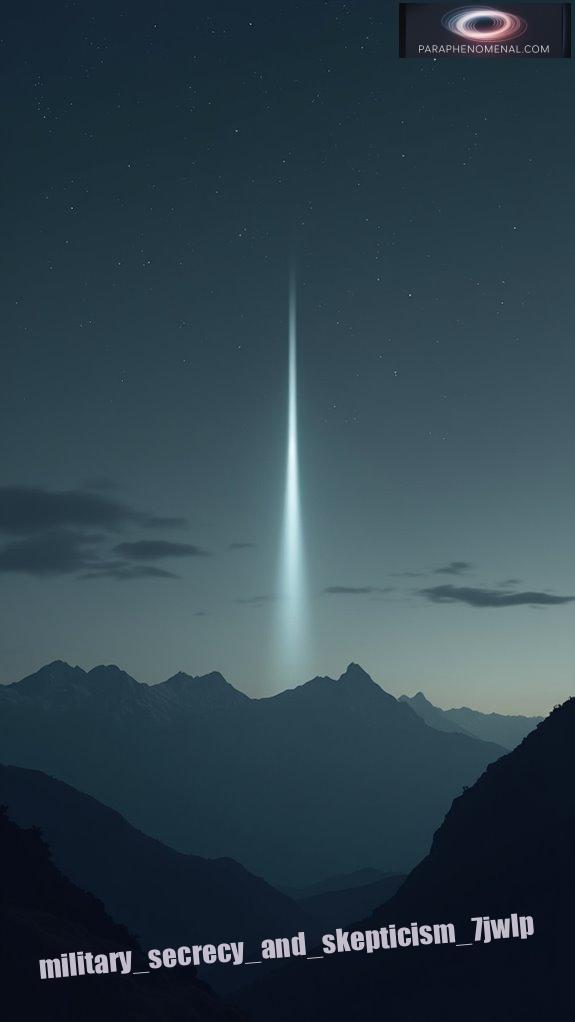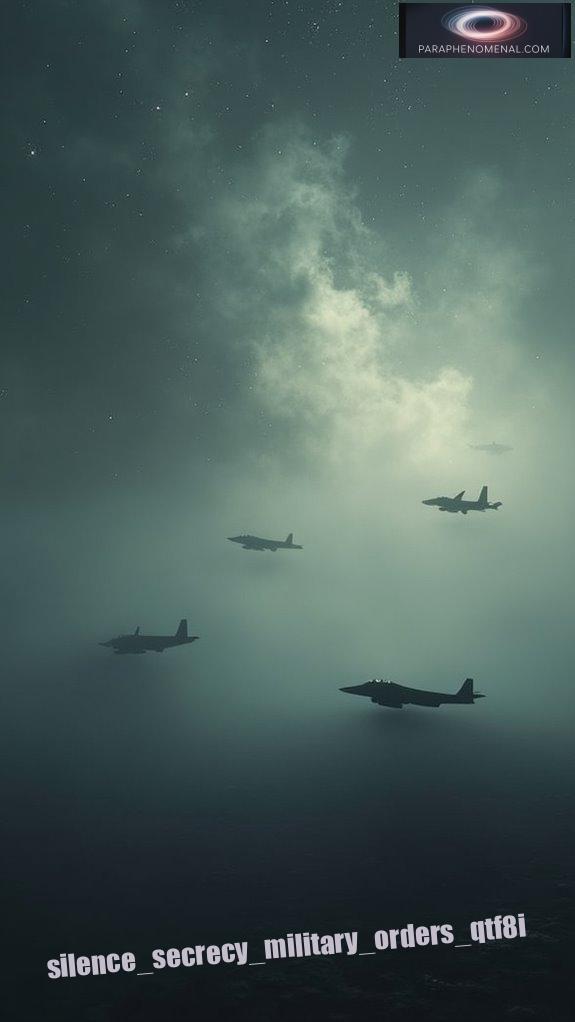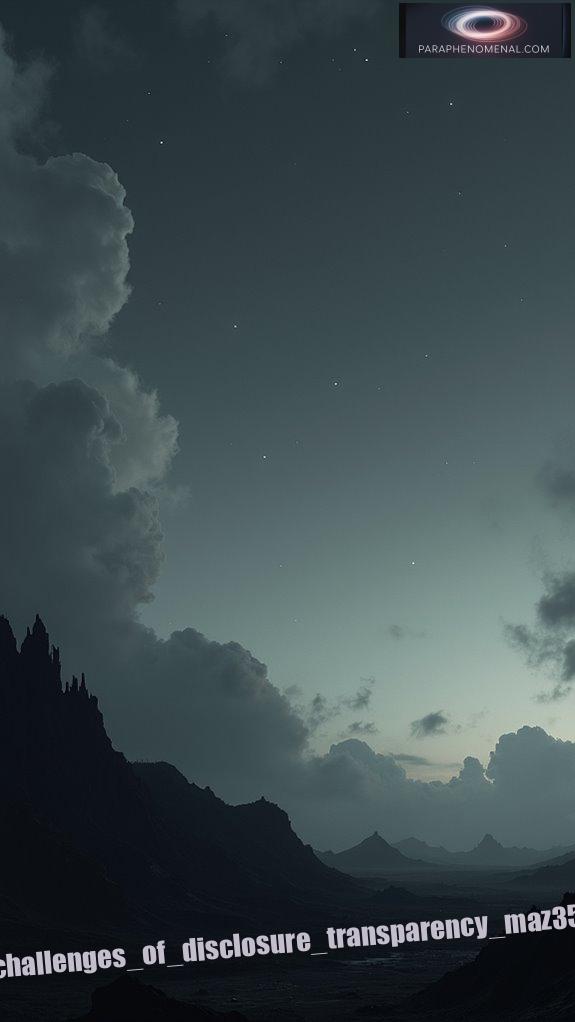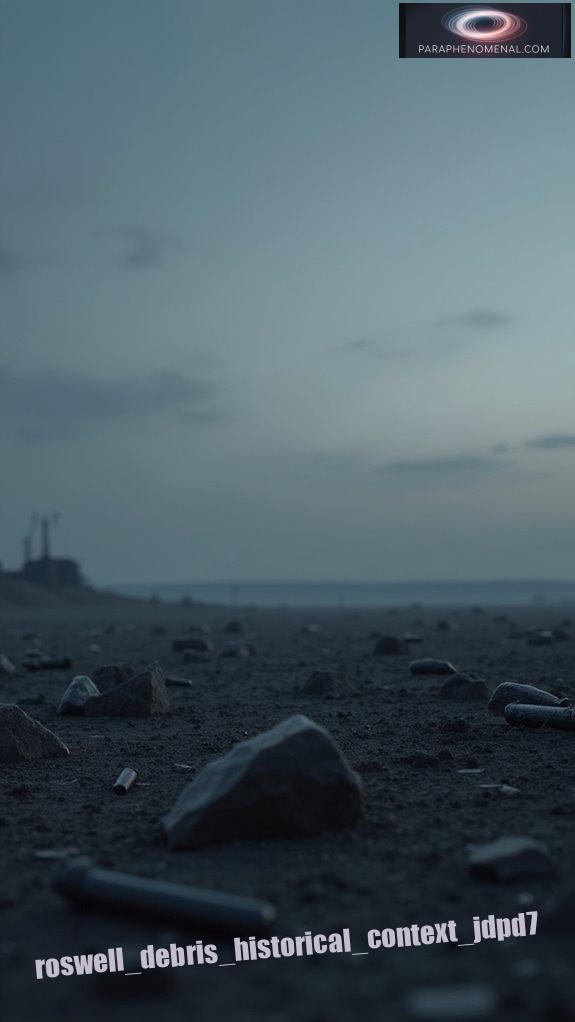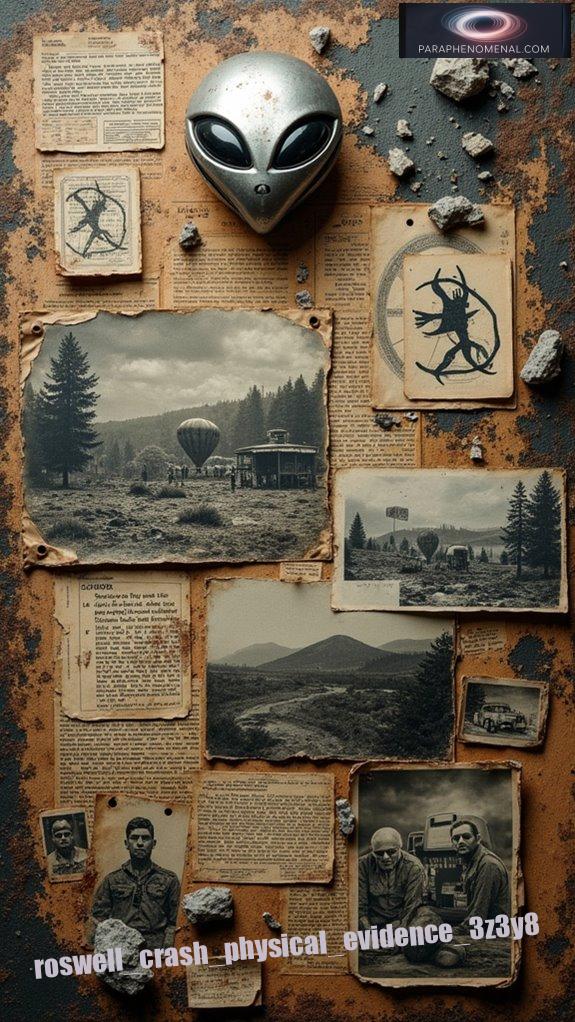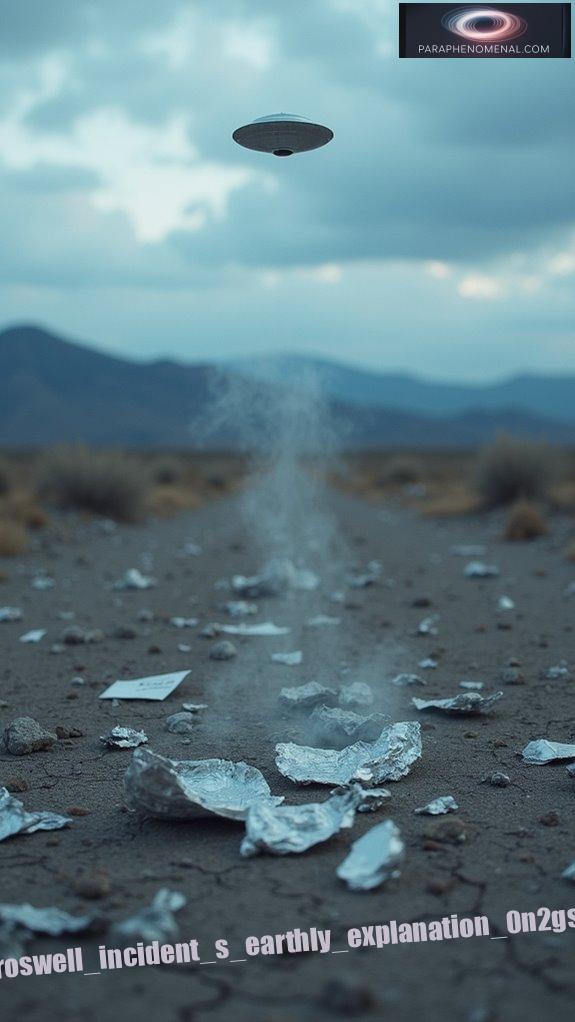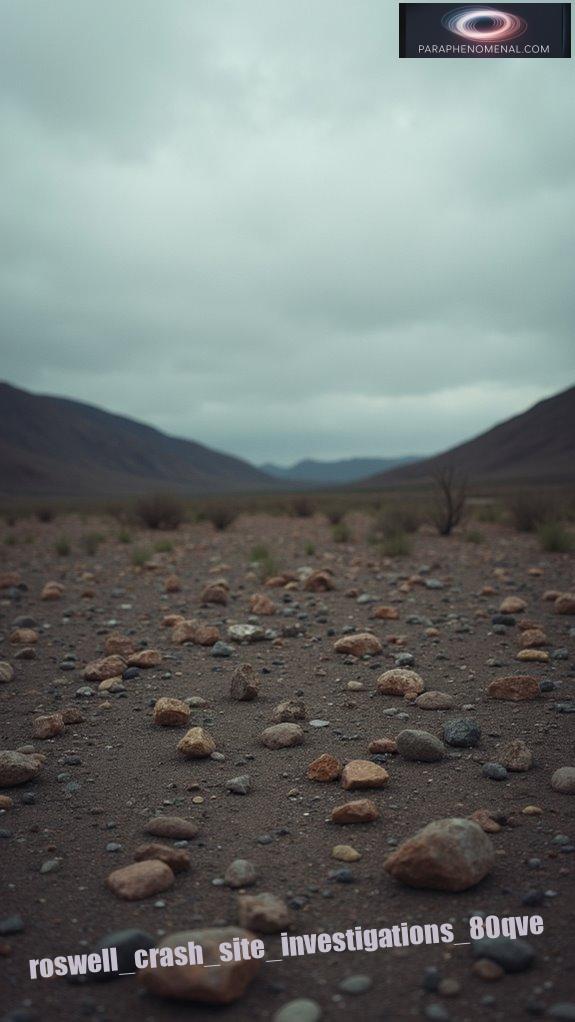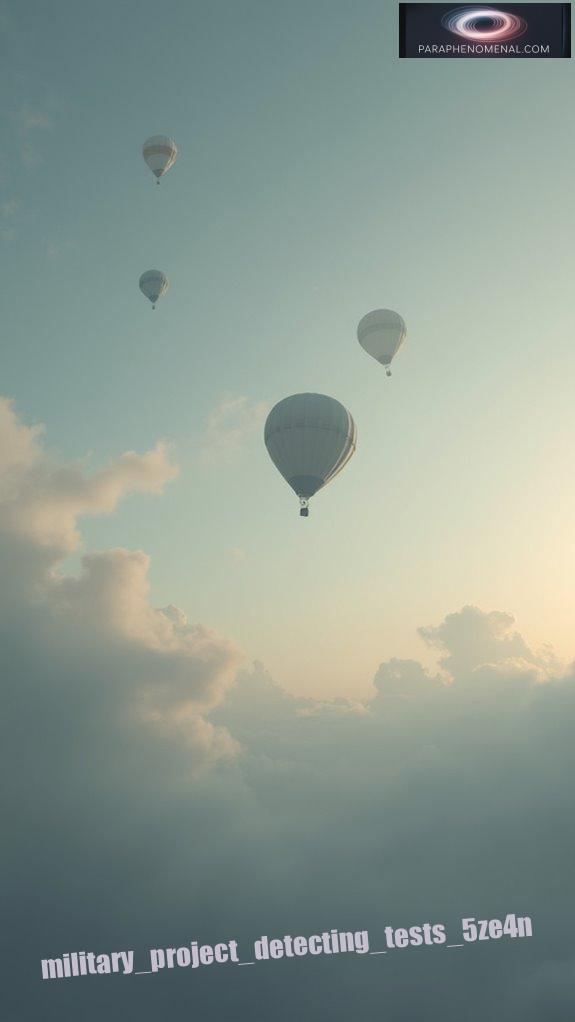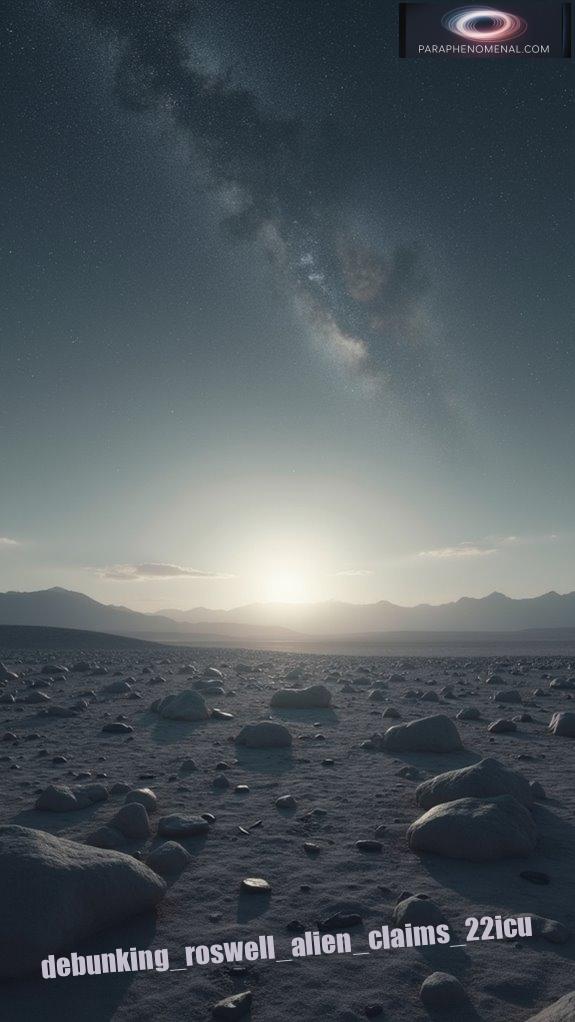Why were witnesses so keen to collect debris from Roswell?
Their insatiable curiosity pushed them to uncover the truth behind the mysterious fragments rancher Mac Brazel stumbled upon.
Once word got out, excitement spread like wildfire.
Those metallic pieces sparked wild theories and wonder about their origins.
Were they extraterrestrial?
I found myself asking the same questions. The fear of government secrecy loomed large.
At ParaPhenomenal, I dive into these mysteries, unraveling the untold stories of Roswell and what they reveal about UFO phenomena.
A Personal Encounter with UFO Investigations
I recall a night under the vast Texas sky, one summer long ago.
While stargazing, I noticed something unusual zipping through the air.
It wasn’t your typical shooting star; it moved too fast and changed directions suddenly.
My heart raced. I grabbed my phone, capturing what I could.
In that moment, I felt the same thrill as those Roswell witnesses.
I knew I was experiencing something extraordinary, just like them.
Was it a plane? A UFO?
That evening ignited my passion for investigating aerial phenomena, leading me to explore the intersection of curiosity and fear surrounding UFOs and government investigations.
Quick Takeaways
- Witnesses collected debris to better understand its unusual characteristics and speculate about its origin.
- Reports of “flying saucers” heightened curiosity, prompting individuals to investigate personally.
- The metallic fragments fueled public interest and a desire for personal verification of the claims.
- Some witnesses aimed to preserve pieces of the debris for future analysis and proof of unidentified objects.
- The secrecy surrounding the military’s investigation led to increased skepticism and the urge to explore independently.
Initial Discovery and Reporting of the Debris

On July 4, 1947, after a fierce storm, rancher Mac Brazel stumbled upon strange debris scattered across his land near Roswell, New Mexico.
On July 4, 1947, rancher Mac Brazel discovered mysterious debris on his Roswell property, sparking nationwide intrigue.
The unusual debris characteristics immediately caught his attention, prompting him to report it to local authorities.
As reports of “flying saucers” surfaced in media coverage, Brazel’s find gained significant public interest.
What was this mysterious material? Descriptions of metallic fragments and other unusual objects fueled speculation and curiosity.
Witnesses, driven by a desire for truth, began collecting pieces to understand better what Brazel had uncovered. The physical evidence from the crash site would later fuel theories about extraterrestrial visitation.
This event marked the beginning of a major investigation that would capture the nation’s attention, resonating with those who yearn for answers about unexplained phenomena, driving the motivation behind our site, ParaPhenomenal.
Military Involvement in Debris Collection
As the excitement around the discovery grew, the military quickly stepped in to collect the debris reported by rancher Mac Brazel.
They followed strict military protocols to secure the scene, assigning Major Jesse Marcel and other personnel to guarantee nothing was overlooked.
Their objective was clear: conduct a thorough debris analysis to determine the origin and nature of the materials. Believing they might recover a “flying disc,” every fragment was treated with utmost importance.
Major Marcel’s team worked diligently, gathering unusual materials that sparked both military and scientific curiosity. Among the items collected were metallic fragments that exhibited unusual properties that suggested advanced technology.
The need for secrecy loomed, driven by national security concerns, as the military sought to control the narrative.
This collective effort laid the groundwork for the enduring mystery of Roswell that fuels intrigue today.
Official Press Release and Public Response
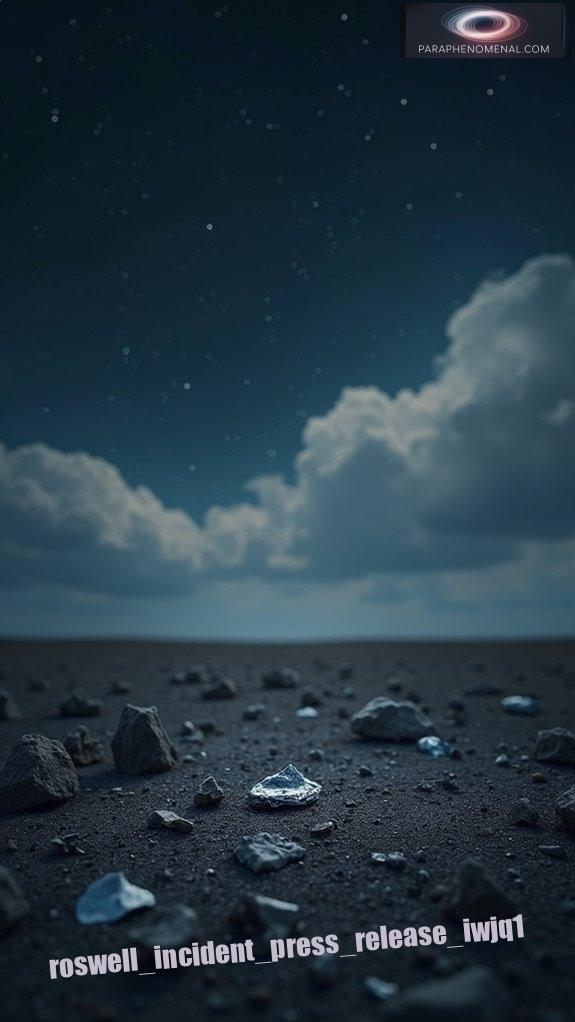
The military’s initial response to the Roswell incident shifted dramatically when First Lieutenant Walter Haut, the public information officer, issued a press release on July 8, 1947.
This announcement confirmed that they possessed a “flying disc,” capturing immediate public interest and altering public perception.
The confirmation of a “flying disc” captivated the public and shifted perceptions dramatically.
As news spread, the media’s influence intensified the fascination with the event. People questioned what the government was hiding and speculated wildly about extraterrestrial life.
Your desire for transparency fueled further inquiries, igniting debates about the nature of the materials collected and their origins.
This fervor around the incident ultimately encouraged more witnesses to step forward. Additionally, the declassified UFO incident files revealed that the government had received numerous reports of unidentified objects in the same period, only heightening public interest.
At ParaPhenomenal, we aim to explore these intriguing narratives and uncover the truths behind such extraordinary claims.
Secrecy and Classification of Information
Secrecy surrounded the Roswell incident almost immediately, as the military imposed strict controls over the information regarding the debris and any potential extraterrestrial elements.
Witnesses, including military personnel, were often bound by military protocols that demanded silence and prevented them from discussing their experiences.
Information suppression was rampant, fueled by fears during the Cold War about what advanced technologies could mean for national security.
This unwavering secrecy sparked public suspicion and intrigue, as citizens sought to uncover the truth behind the debris found.
The tight grip on details only intensified interest, prompting some to investigate further. In this context, the government analysis of the wreckage underscored the lengths to which authorities went to maintain control over the narrative surrounding Roswell.
At ParaPhenomenal, we explore such mysteries, encouraging a quest for transparency amidst a history often shrouded in darkness.
Scientific and Technological Interest in Materials

Interest in the materials recovered from the Roswell incident quickly grew, driven by their mysterious properties and potential technological implications.
- The debris composition revealed unusual materials not seen on Earth.
- Scientific inquiry aimed to understand these potential advancements in technology.
- Investigations sparked a quest for knowledge that could redefine modern engineering.
As debris analysis continued, the unique features of the recovered fragments raised questions about their origins.
Some samples seemed to contain a remarkable aluminum alloy, prompting speculation about advanced technology. Recent studies suggested that this debris might include possible extraterrestrial origins, which further fueled the intrigue surrounding the event.
This kind of scientific curiosity highlighted the need for freedom in exploration.
At ParaPhenomenal, we recognize the importance of unraveling these mysteries, allowing us to reflect on the intersection of human experience and unexplained phenomena.
The Roswell event remains a significant chapter in the story of our quest for understanding.
Eyewitness Accounts and Their Impact on Recovery Efforts
Eyewitness accounts played a significant role in shaping the recovery efforts of Roswell debris, particularly as individuals shared their experiences with military personnel and investigators.
Eyewitness accounts significantly influenced the Roswell debris recovery, as personal experiences informed military investigations and public perception.
Their testimonies influenced public perception and drove urgency in collecting the debris, as people began to connect these narratives with possible alien origins.
Eyewitness credibility became essential for evaluation, as those who reported unusual materials and sightings reinforced the belief that something extraordinary had occurred.
With varied accounts from ranchers to military officers, the diversity of viewpoints bolstered claims, promoting further investigation.
Understanding these accounts is important for grasping the Roswell incident’s complexities, which is why we’ve created this website, ParaPhenomenal, to explore and analyze these fascinating phenomena together.
FAQ
What Did the Debris Look Like?
The debris described by eyewitnesses exhibited unusual characteristics.
People noted a lightweight, foil-like consistency that crumpled easily but returned to shape. The color appeared silvery or metallic, with some fragments reflecting light in peculiar ways.
Its composition included an aluminum alloy unlike anything familiar, as it boasted unique blends of metals.
Many felt compelled to collect this mysterious material, driven by curiosity about its origin and purpose amid cold war tensions.
Were There Any Photographs Taken of the Debris?
There aren’t any well-documented photographs taken of the Roswell debris.
Witness accounts suggest that few images exist, as military personnel focused on debris analysis rather than documentation.
The urgency heightened by reports of potential alien bodies led to strict control over visual evidence.
This secrecy spurred the intrigue surrounding Roswell, driving many to explore the mystery further.
Resources like ParaPhenomenal aim to clarify these events and provide understanding into such unexplained phenomena.
How Did the Public React to the Recovery Efforts?
The public reacted with a mix of intrigue and skepticism to the recovery efforts.
As media coverage spread, people questioned whether the military’s explanation was genuine or a cover-up.
You could sense excitement and fear, as some believed they were witnessing evidence of extraterrestrial life, while others dismissed it as mere hype.
This ambiguous atmosphere spurred further investigation, prompting groups like ParaPhenomenal to explore the truth behind the Roswell mystery.
Did Any Witnesses Come Forward Years Later?
Yes, many witnesses came forward years later, sharing their experiences through witness testimony.
As time passed, some offered late disclosures about their roles and observations during the Roswell incident.
These accounts included details of unusual materials and strange beings, adding layers of intrigue to the narrative.
Such testimonies have fueled ongoing discussions about government secrecy and the events surrounding that summer, prompting interest in uncovering the truth about the Roswell incident.
What Happened to the Collected Debris Afterward?
After collecting the debris, the military disposed of it in various ways.
Some materials were relocated to secure facilities for analysis, while others were reportedly destroyed.
Military involvement remained strong, with strict protocols ensuring secrecy and control over information.
The mystery surrounding the debris fueled speculation and intrigue, leading many to question what really happened.
Understanding these actions is part of our goal at ParaPhenomenal, as we explore the unexplained events of our past.
References
- https://www.ancient-origins.net/unexplained-phenomena/roswell-0016619
- https://www.skyatnightmagazine.com/space-science/roswell-ufo-incident
- https://www.livescience.com/roswell-the-first-witness-history-channel.html
- https://en.wikipedia.org/wiki/Roswell_incident
- https://www.britannica.com/event/Roswell-incident
- https://www.youtube.com/watch?v=RCAHyclAmZs
- https://jhmovie.fandom.com/wiki/Roswell_incident
- https://www.psychologytoday.com/us/blog/the-paranormal/201204/what-about-roswell


